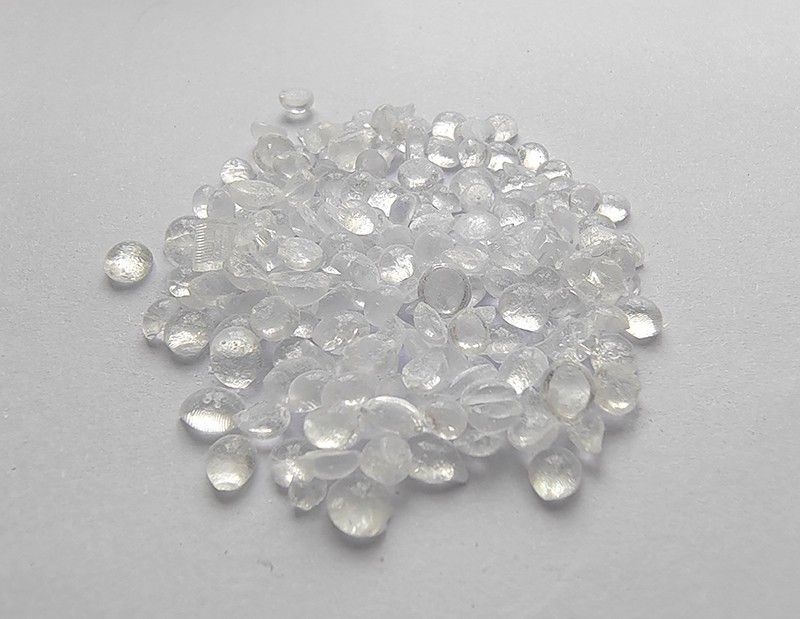The miscibility of C5 hydrogenated petroleum resin is one of its key properties in applications such as adhesives, coatings, and rubber. The following C5 hydrogenated petroleum resin manufacturer analyze from three dimensions: chemical structure basis, factors affecting miscibility, and typical application systems:
1. The miscibility characteristics determined by chemical structure
1. Effects of hydrogenation modification
C5 petroleum resin is subjected to hydrogenation treatment, which saturates the unsaturated double bonds in the molecule (such as the double bond hydrogenation of cyclopentadiene units), significantly reducing its polarity and making it more miscible with non-polar or low polarity materials. For example:
(1) Good compatibility with hydrocarbon resins, such as EVA (ethylene vinyl acetate copolymer), SIS (styrene isoprene styrene block copolymer), natural rubber, etc.
(2) Compatibility with polar materials is limited: polymers with high polarity such as alkyd resins and polyester resins need to be improved through formula adjustments (such as adding compatibilizers) to enhance compatibility.
2. The role of molecular weight distribution
Carbon five C5 hydrogenated petroleum resin with narrow molecular weight distribution (such as Japan's Escorez series) have better miscibility because of their uniform intermolecular forces and are less prone to phase separation.

2. Key influencing factors of miscibility
1. Polarity matching: infinitely miscible with non-polar materials such as natural rubber and SBS; Partially miscible with medium polarity materials (such as EVA); Additives are required to assist with strongly polar materials such as PA.
2. Temperature: High temperature (such as hot melt adhesive processing temperature of 150-180 ℃) can enhance molecular thermal motion and expand the mixing range, but phase separation may occur due to differences in crystallinity after cooling.
3. Crystallinity: When miscible with crystalline polymers such as PE and PP, the resin dosage should be controlled (usually<30%) to avoid affecting the crystalline structure of the matrix.
4. Additives: Plasticizers (such as white oil) can reduce system viscosity and promote miscibility; However, fillers such as calcium carbonate may undergo phase separation due to differences in surface energy and require pre-treatment.
3. Miscibility performance in typical application systems
1. Hot melt adhesive (HMA)
EVA based hot melt adhesive: C5 hydrogenated petroleum resin is well miscible with EVA (VA content 18-28%), which can improve initial adhesion and holding strength. For example, adding 30-40% carbon pentahydride petroleum resin (softening point 90-100 ℃) to the sealing adhesive of express bags can form a homogeneous system with EVA and wax.
SBC based hot melt adhesive: When blending with SIS and SBS, attention should be paid to the matching of resin softening point and elastomer phase. Resin with a high softening point (above 120 ℃) is more suitable for the styrene phase of SIS, enhancing its cohesive strength.
2. Rubber processing
Tire tread rubber: After being mixed with natural rubber and BR (butadiene rubber), it can reduce Mooney viscosity and improve processing performance. For example, adding 5-10% hydrogenated petroleum resin can improve the friction coefficient between the tire surface and the road surface.
Rubber products (such as sealing strips): When miscible with EPDM, a resin with a low acid value (<1 mgKOH/g) should be selected to avoid affecting the vulcanization rate.
3. Coating system
Solvent based coatings: In asphalt coatings, C5 hydrogenated petroleum resin can be mixed with petroleum asphalt to enhance weather resistance and adhesion; But in alkyd resin coatings, the addition amount needs to be controlled (<15%), otherwise fogging may occur.
Water based system: First, C5 hydrogenated petroleum resin shall be emulsified (such as non-ionic surfactant), and then mixed with acrylic lotion for building waterproof coating.
4. Miscibility testing method
1. Melt blending observation method: Heat and melt the resin and matrix material in proportion, stir evenly, and then cool to observe transparency and phase separation.
2. DSC (Differential Scanning Calorimetry): Determine whether a homogeneous system is formed by measuring the glass transition temperature (Tg). If well mixed, the system usually exhibits a single Tg.
3. SEM (Scanning Electron Microscope): Observe the microstructure of the cross-section of the blend. If the interface between the two phases is blurred, the miscibility is good.
The miscibility of C5 hydrogenated petroleum resin is closely related to its hydrogenation degree, softening point, and molecular weight distribution. It performs well in non-polar systems such as hot melt adhesives and rubber, while in polar systems, good miscibility needs to be achieved through formula optimization. In practical applications, it is recommended to verify the miscibility stability of the target system through small-scale testing, and combine DSC, SEM and other methods for microstructure analysis to obtain the best performance.

 Language
▼
Language
▼


 Address:Linzi District,Zibo City,Shandong Province
Address:Linzi District,Zibo City,Shandong Province E-mail:wanbang@wanbangresin.com
E-mail:wanbang@wanbangresin.com WhatsApp:+8615053337101
WhatsApp:+8615053337101